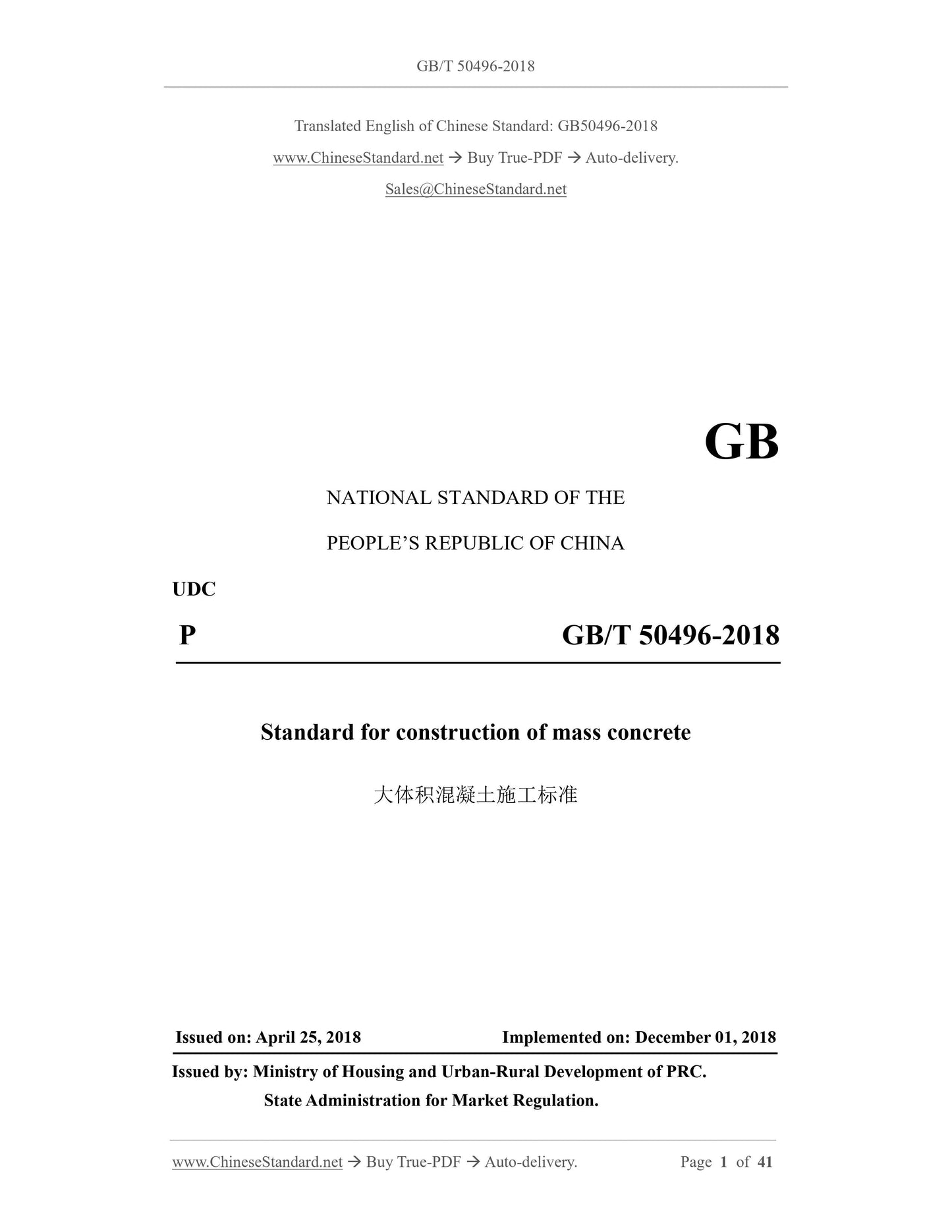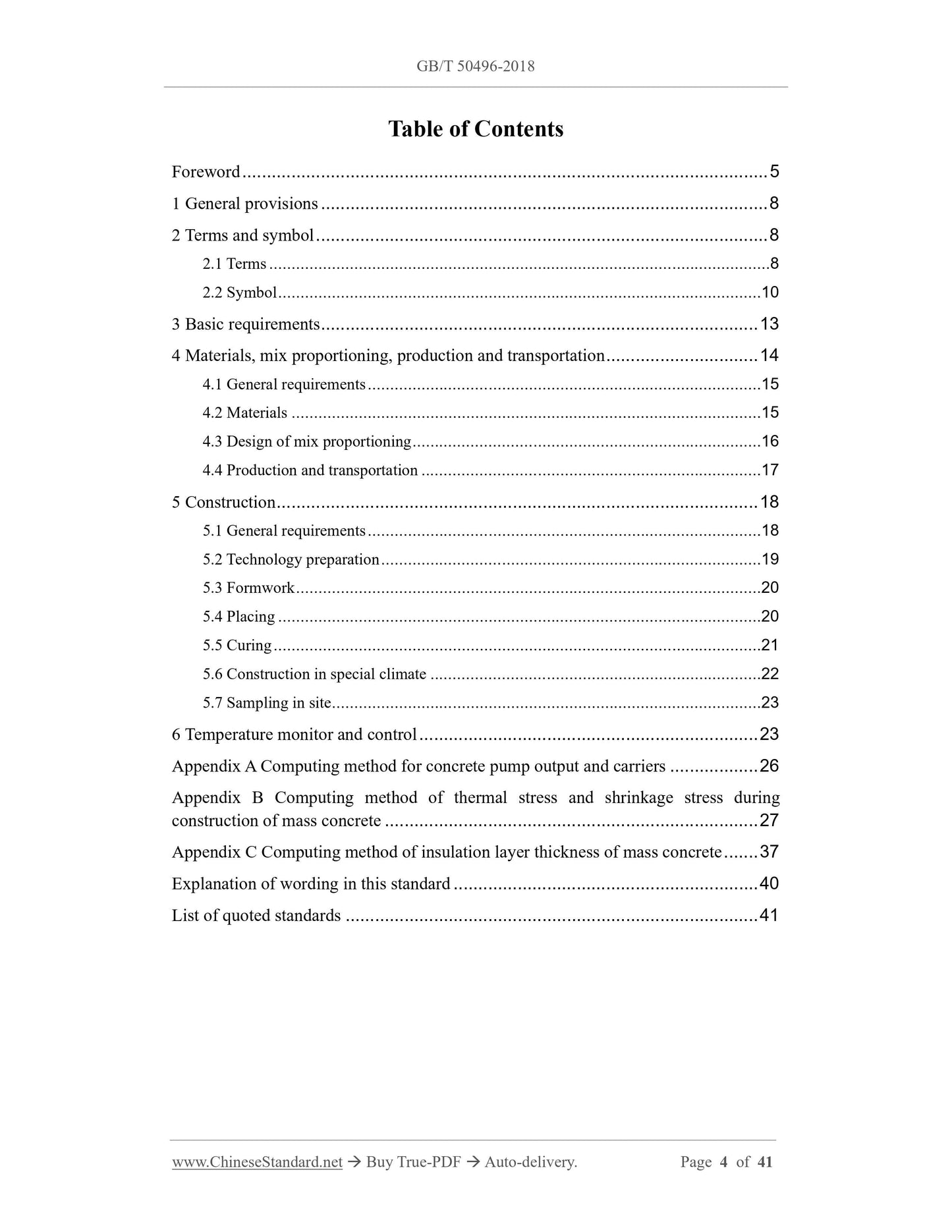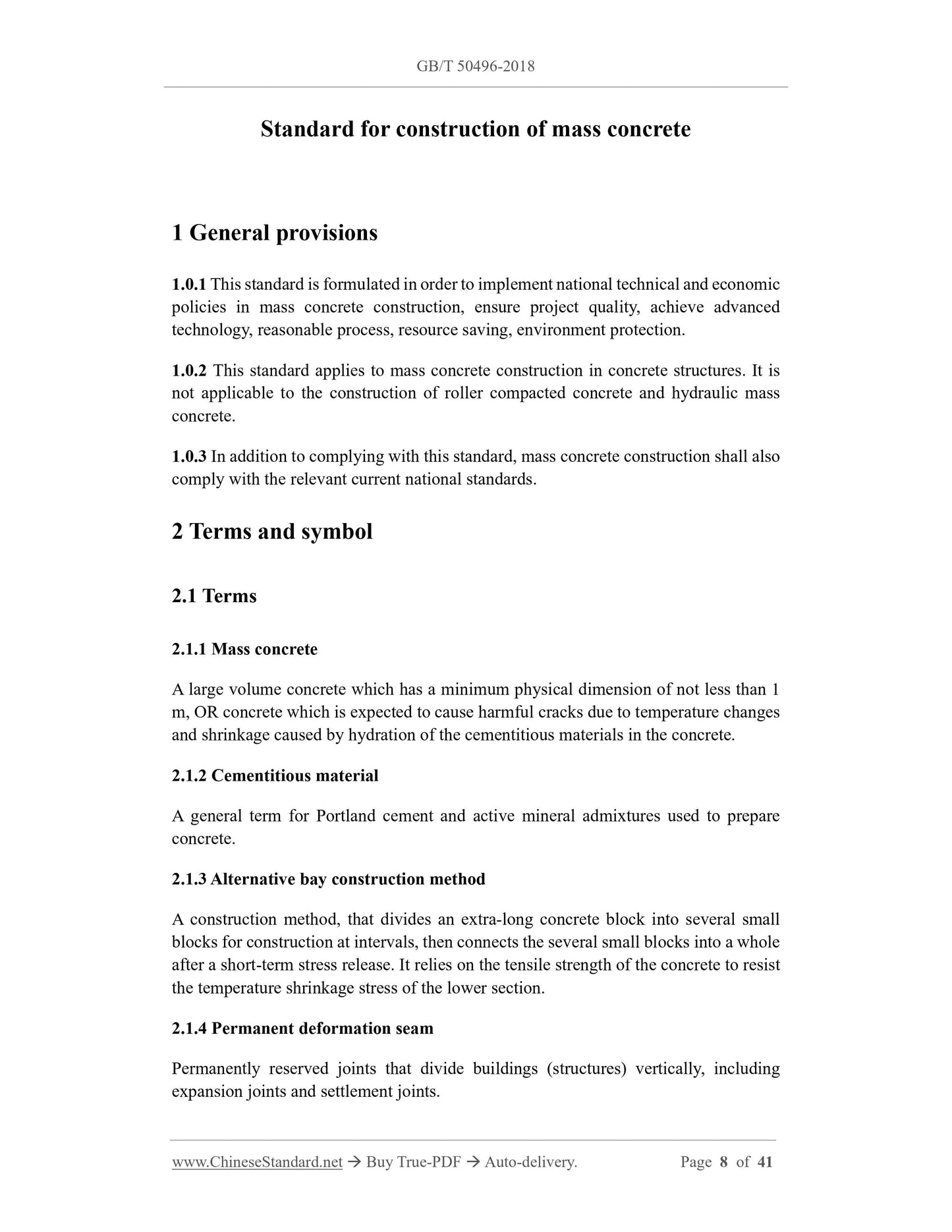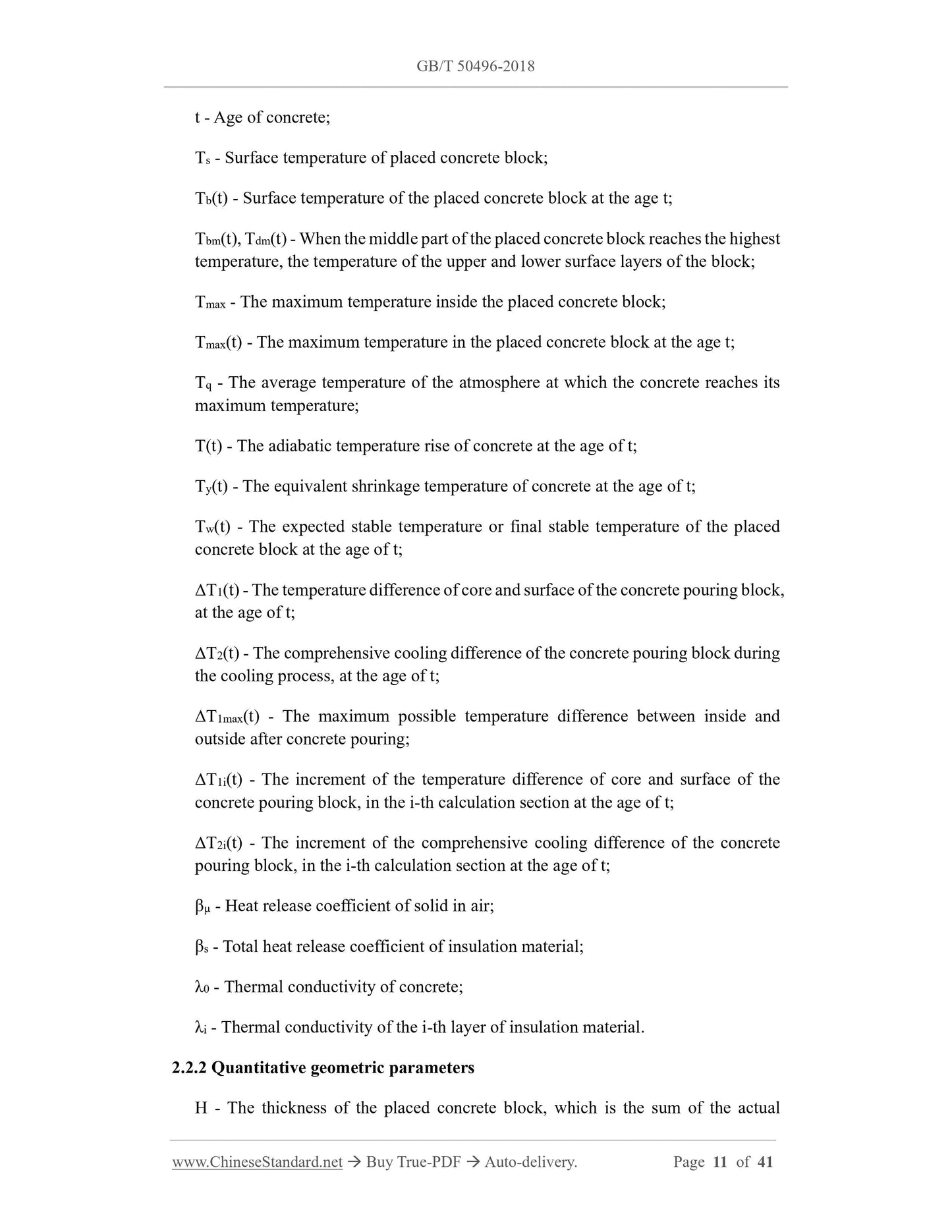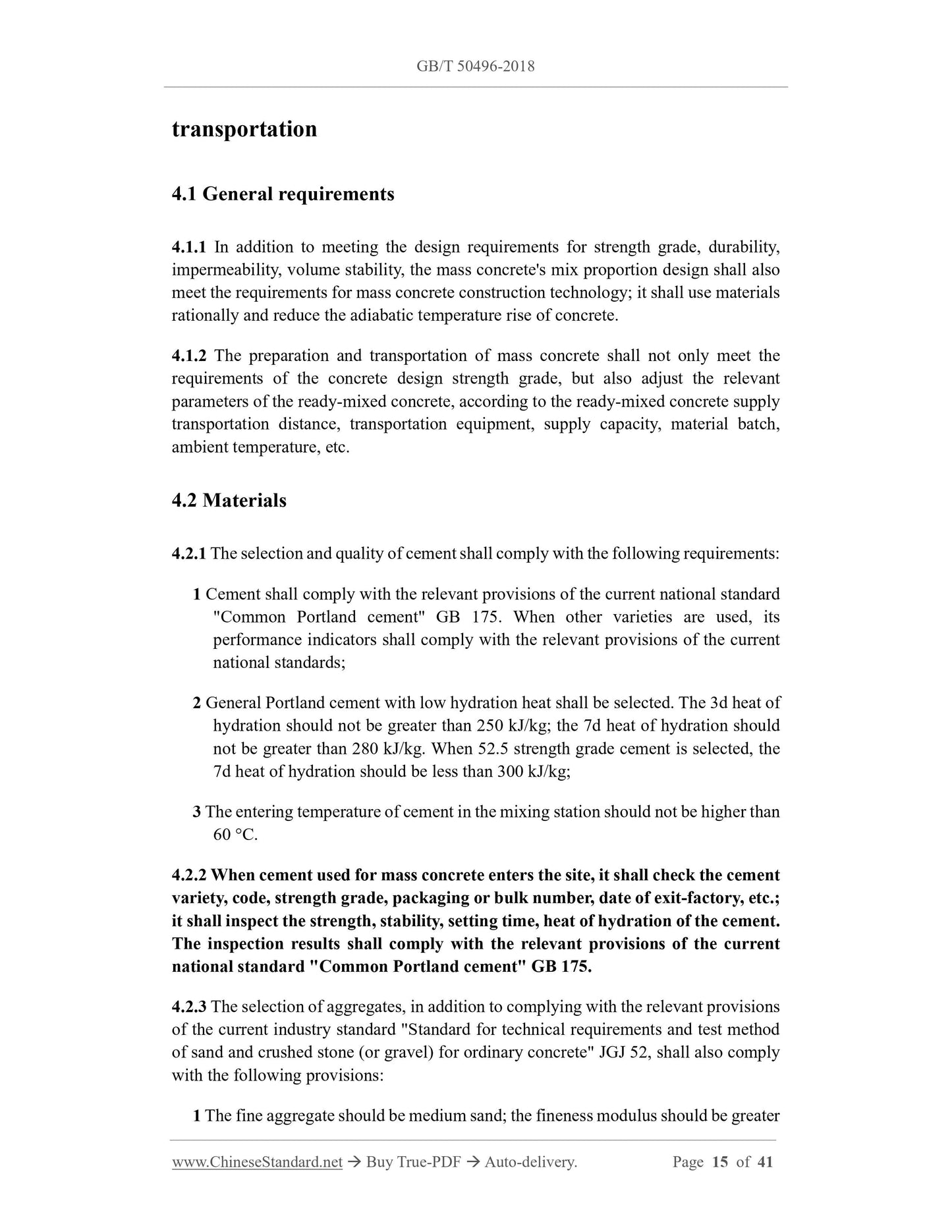1
/
of
12
www.ChineseStandard.us -- Field Test Asia Pte. Ltd.
GB 50496-2018 English PDF
GB 50496-2018 English PDF
Regular price
$510.00
Regular price
Sale price
$510.00
Unit price
/
per
Shipping calculated at checkout.
Couldn't load pickup availability
GB 50496-2018: Code for construction of mass concrete
Delivery: 9 seconds. Download (and Email) true-PDF + Invoice.Get Quotation: Click GB 50496-2018 (Self-service in 1-minute)
Newer / historical versions: GB 50496-2018
Preview True-PDF
Scope
1.0.1 This standard is formulated in order to implement national technical and economicpolicies in mass concrete construction, ensure project quality, achieve advanced
technology, reasonable process, resource saving, environment protection.
1.0.2 This standard applies to mass concrete construction in concrete structures. It is
not applicable to the construction of roller compacted concrete and hydraulic mass
concrete.
1.0.3 In addition to complying with this standard, mass concrete construction shall also
comply with the relevant current national standards.
Basic Data
| Standard ID | GB 50496-2018 (GB50496-2018) |
| Description (Translated English) | Code for construction of mass concrete |
| Sector / Industry | National Standard |
| Classification of Chinese Standard | P25 |
| Word Count Estimation | 46,468 |
| Date of Issue | 2018-04-25 |
| Date of Implementation | 2018-12-01 |
| Older Standard (superseded by this standard) | GB 50496-2009 |
| Regulation (derived from) | Ministry of Housing and Urban-Rural Development Notice 2018 No. 77 |
| Issuing agency(ies) | Ministry of Housing and Urban-Rural Development of the People's Republic of China; State Administration for Market Regulation |
Share
